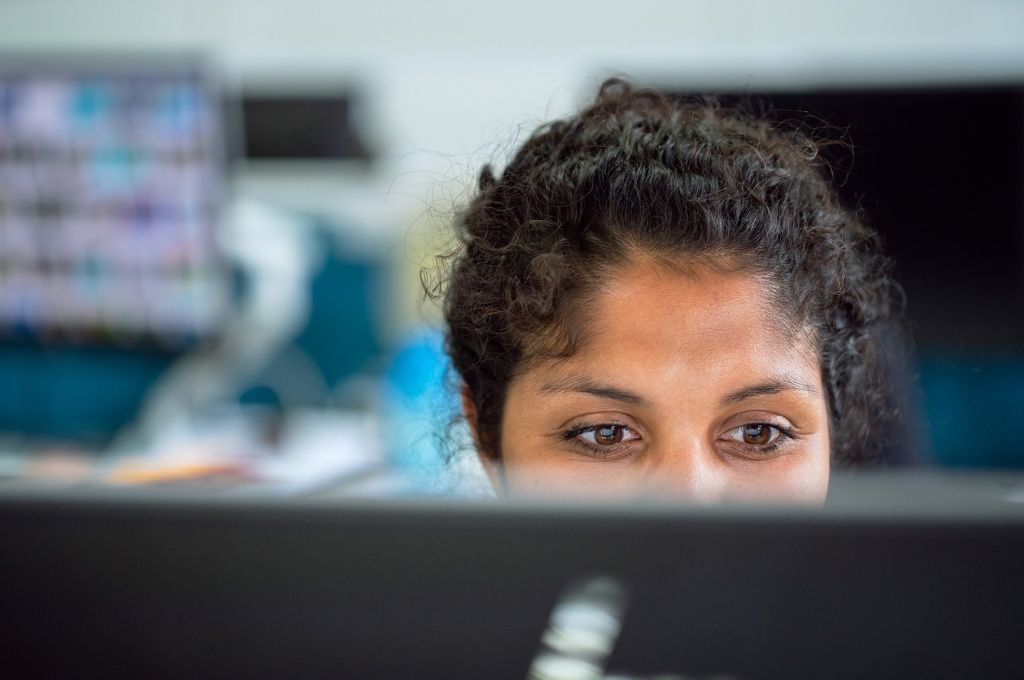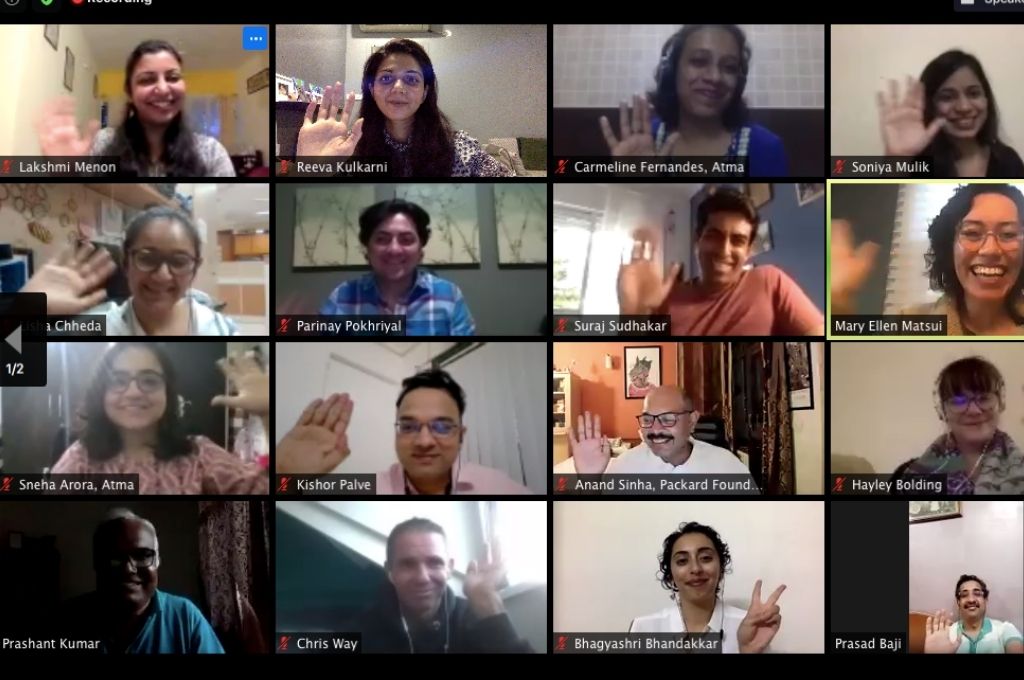My name is Lakshmi Menon, and till very recently I was working as a fundraising manager at Atma. Before that, for five years, I worked at Hasiru Dala Innovations, a waste management firm in Bengaluru, first as the head of business development and then operations. I transitioned out of this role around July last year. Soon I came across a fundraising programme by India Leaders for Social Sector (ILSS) and signed up to be a part of it. The duration of the programme was six months, and a scholarship was being offered to unemployed individuals. I was awarded the scholarship and informed that I would be placed at one of their partner organisations on completing the programme. This is how I got the role at Atma in September 2020 and began working in their fundraising department.
Though I’ve worked in business development at both Hasiru Dala Innovations and Atma, the nature of the roles was different. In a social enterprise, customers pay for the service they receive. In a nonprofit, the dialogue is very different. You are providing services to communities or other nonprofits, but your customer—who gives you money for rendering that service—is a different person: a potential funder. Hence, the pitch and the way you position the offering are very different.

Pitching a nonprofit that helps build the capacity of other nonprofits is not as appealing to funders as one that helps educate children, or trains people for jobs. Here we are talking about something that is long term, and hard to visualise. As a fundraiser, it was difficult for me to make this shift. How do you go from saying, ‘You pay this money and you will see its direct benefit in your own life,’ to ‘You will see the benefit of your donation in someone else’s life.’ Even harder is telling a funder who is investing in, say, an organisation’s capacity that ‘you will see the benefit of your donation eventually, when the organisation grows over time, and thrives’.
The ILSS course contributed to my understanding of the different kinds of funders. How does a person heading a foundation think as opposed to a Corporate Social Responsibility (CSR) professional or an individual interested in making a small donation? What should be the difference in narrative, in how we approach them, and the kind of exchange we are discussing? When I say ‘exchange’, I am referring to what the funder will receive in return for their donation. Institutional donors as well as individuals are always looking for something in return—furthering their foundation’s mission, gaining goodwill for the brand, creating a legacy, seeing how their funds have benefitted the lives of marginalised people.
9.00 AM: I start my day by going through our fundraising strategy, which we prepare at the beginning of every financial year. This helps us track the amount that the organisation needs to raise, and plan and set the agenda for whom we should approach.
We have a pipeline of organisations, groups, and individuals, which is constantly updated. This helps in tracking the status of the different types and levels of conversations that might be happening simultaneously. I have a quick chat with my team to ensure everyone is on the same page.
10.00 AM: Next on the agenda is populating the pipeline with more organisations and names. From experience we know that the value of the pipeline must be at least four times our actual budget.
We build the funding pipeline in a couple of ways. First, we check the various nonprofit Google groups we are part of for information on upcoming grants or applications that might have opened up recently.
Many organisations, however, do not update this information, which means we have to put in some extra effort to get in touch with the right person.
Second, we spend several hours every week researching and looking through various websites, articles, and other sources to build our knowledge base on different funding organisations. This includes inputs on their programmes, the sectors they are part of, their activities, whether they have funded nonprofits with initiatives similar to ours, and so on.
We also spend time getting details on the decision makers in these funding organisations. If they are part of companies, their information tends to be available on their website or LinkedIn profiles. Many organisations, however, do not update this information, which means we have to put in some extra effort to get in touch with the right person. We do this by going through their social media handles to see if anyone in our network can connect us with them. Often we ask our board members to help us reach out to organisations. Having details gives us an informed idea of the people we end up talking to.
Conducting this research is critical because we cannot contact CSR groups and foundations without any prior information about their work. It is also a key factor in building a successful pitch.
11.30 AM: We have been in talks with this company for a while by now and I get on a call with their team. They have asked if we can tweak our programme so that it aligns with their goals and initiatives for this year.
When faced with such a situation, it is very important, more so for a small organisation like ours, to involve the CEO or founder in the fundraising conversations. This is because only the CEO—who is aware of the organisation’s existing budget, programmes, operational costs, which I as a non-executive person might not be privy to—can make the decision when such requests are made.
Involving the leadership in these calls allows for discussion on whether changes are possible in accordance with the company’s strategy, plans, and costs. This is crucial because while it is important that the association makes sense for us and our programme, the overall aim is to ensure that the partnership benefits the grantee and the funder.
1.30 PM: While a major part of my work involves scouting for new funders, 30–40 percent of my time is devoted to managing our existing funders. This involves sending out reports and updates every quarter. The fundraising, communications, and programme teams work together to generate these reports. Typically we spend 10–15 days every quarter on these reports. The formats vary from the standard ones we have for some funders to specific ones that other funders expect us to follow.
3.30 PM: I do a quick catch-up call with our finance team. These calls are essential to ensure that we are looking at and closing the loop on all compliance-related issues around funding and reporting that are important to both the funders and us.

5.00 PM: I have my monthly review meeting with the team. We study the wins and the losses and analyse what worked and what didn’t. This gives us insights into the funders’ needs. It is important that there is synergy between what you have to offer and what funders are looking for. It is pointless feeling bad about not getting funded. Instead, it’s important to focus on finding a suitable funder and thinking about what we can offer them that aligns with their strategy and helps them get their foundation or company on board.
Part of our team discussions are also about innovation. COVID-19 and its impact on funder priorities has made us reassess what is more relevant at this point. What would be interesting enough for them to get into a conversation with us? Just the initial phase of getting somebody to respond and say, ‘We think you’re doing some interesting work,’ is extremely hard to get to in these times.
6.30 PM: The last call I have for the day is with a philanthropist. One of the biggest challenges for Atma has been to convince individual funders to increase their donations towards capacity building. This has become especially difficult during the pandemic as people with the ability to donate have already committed their funds elsewhere. Building the capacity of organisations doesn’t seem to be a priority as of now.
The hardest part, though, is converting a lead and receiving money in the bank. Even though people might praise our work, it’s rare to hear, ‘Yes, we will give you the money.’ In the six months I’ve been at Atma, I’ve heard it only twice. In fact, despite all the research, the contacts, the strategy alignment, and so on, we have received money in the bank only 15–20 percent of the time.
Because I come from a corporate sales background, I don’t get affected by all the ‘nos’ I hear. I know that it is part and parcel of being in this position. The challenging part is the amount of effort I, as an individual in a nonprofit organisation, need to put in to build a proposal. In companies there are teams that churn out marketing material, so the salesperson who is reaching out to customers doesn’t have to do all the sales support work. Here, without that support system, the workload and pressure are significantly higher.
Sometimes I think about what keeps me motivated, what gets me out of bed every morning. And I have come to the conclusion that it is my sales orientation. It’s not really about the conversion for me; it’s about the joy of meeting different people, understanding their requirements, and bridging the gaps. What I’ve learned from my training in corporate sales is to look at fundraising as a process that I repeat every day, and I must take whatever comes with it.
The private sector is not person-oriented, in that if there is failure, it is not personal. Additionally, you can leave the company and another person can pick up where you left off. But in the development sector the connections you make do matter; the relationships matter. And it is these personal connections that bring joy to the process. But they also make the failures difficult. What I have learnt so far is that having a systematic approach to fundraising will keep the joy alive while also helping us manage our failures better.
As told to IDR.
—





